Mersivity-2025 Symposium Proceedings Published December Edition
 (link)
(link)
2025 December 4th Symposium, 3pm to 8pm, in FE114
Join us for our December 4th Symposium, 3pm to 8pm, at 371 Bloor Street West, Toronto, ON, M5S 2R7, Canada.
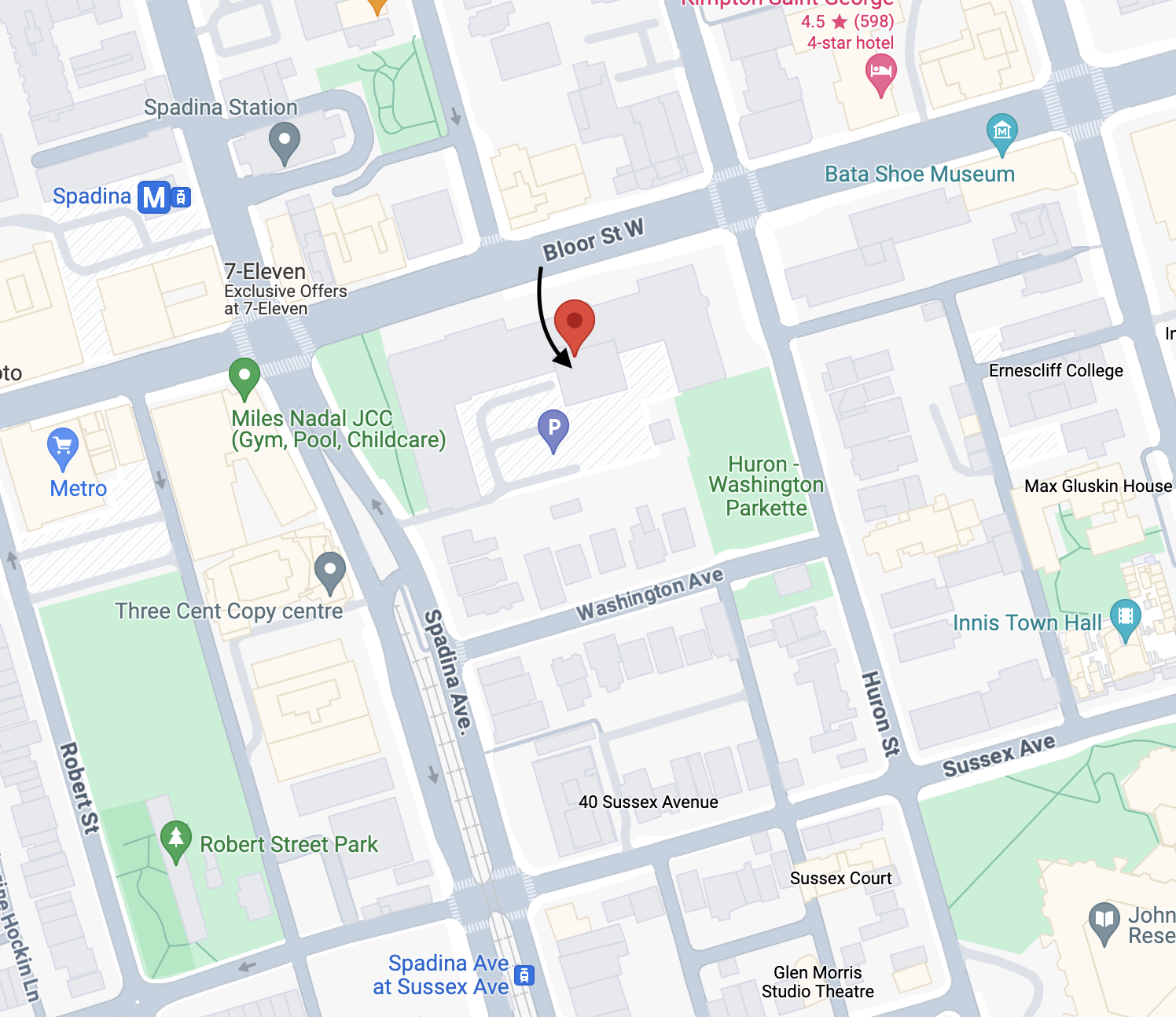


Rough Tentative Program for 2025 Dec. 4th:
Mersivity2025, December 4th, 3pm to 8pm 371 Bloor Street West, Toronto, ON, M5S 2R7, Canada, Auditorium FE114. General Chair, Steve Mann; MC and Hydraulist, Ryan Janzen 3pm to 4:30pm: Audio, Acoustics, and Sensing, Session 1 Team2: Intelligent Audio Processing for Guitar Effects Team4: Sonar-based musical effects processor Team7: IR and ultrasonic-controlled musical effects processor Team8: Chirplet Transform for musical instrument control in Lua Team9: Guitar tuner based on S.W.I.M. (Sequential Wave Imprinting Machine) Team10: RF (WiFi) S.W.I.M. Team11: Musical instrument effects controller(s) array Team12: Brain-sensing music controller with live emotion sensing Research Paper Publications Session 1: Team6: Early Validation of Humanistically Intelligent Exercise System, Rocklen Jeong and Steve Mann Team5: Real-Time Biofeedback for Exercise: Integrating the Sequential Wave Imprinting Machine (S.W.I.M.) with Adaptive Chirplet Analysis, Youssef El Mays, Siddharth "Sid" Guntreddy, and Steve Mann 4:30pm to 5pm food/washroom/water break / social / meet+greet. 5pm, Photogrammetry in Peter Street Basin, Dan Bros 5:10pm, fNIRS, EEG, and CO2 monitoring for SafetyBalling, Patryk Aniolowski 5:15pm Keynote: Alan Preyra and Jeff Archbold 6pm Stage “ShowOp” for all groups (photo op). 6:15pm: Research Paper Publications, Session 2: 6:15pm: Multimodal Measurement Framework for Attentional Modulation Using Ayinography and Wearable EEG, Somin Mindy Lee, Despina Tzanetakis, Mitchell Seitz, Kinkini Monaragala, and Steve Mann State-of-Float: From Balling to Future Space Travel, Steve Mann, Alexander Vicol, Nagham Sabbour, Gesi Wodu, Kinkini Monaragala, Xiaoming Chen, Patryk Aniolowski Athena's Light - Accessible, Highly Portable Research Combining fNIRS, EEG, & PPG, Brain Data Visualization in VR/XR, Alexander Vicol, Stefan Masic, Steve Mann Wearable Technology to Mitigate Bad Elevator Design, Stefan Masic, Nagham Sabbour, Alexander Vicol, Iman Cheema, Eraj Zaidi, Nathes Mehanathan, and Steve Mann DiaShoe: A Smart Shoe for Diabetic Health-Monitoring with Gait and Nanoclimate Sensing, Xiaoming Chen, Mo Yang, Alexander Vicol, Yawen Xiao, Richard Zeng, Wanhe Li, and Steve Mann ColourSenseXR: Helping the Hearing-Impaired Perceive Sound Through Colour, Yawen Xiao, Wanhe Li, Richard Zeng, Alexander Vicol, Xiaoming Chen, Mo Yang, and Steve Mann ECE1724 Team Presentations: Team1: Holocap Pi Team3; Navitational Assistant Team4: “Muse Flow”, EEG Music controller Team5: EEG XR Team9: Gamification of Planking in Unity Team12: Lidar Pi-based Seeing Aid for the Blind
Our Summer-2025 Symposium Proceedings is now published
See: 2025 Symposium Proceedings (link)Solstice Safetymaking Symposium: Immersive Van Gogh, Sun. Jun. 22 at 2pm (included in the Proceedings)
Sunday June 22, 2025, 2pm at Peter Street Basin!
Check out Prof. Steve Mann's Ship of Kolympi essay: Liminal Spaces, Cyborgs, and Beaches (PDF), updated for Solstise Safetymaking Symposium as wearcam.org/swimboat.htm.
HTO Urban Beach - Toronto's Last Remaining Accessible Beach

Mersivity is eXtended Reality (XR) that connects us to each other and our surroundings (environment):
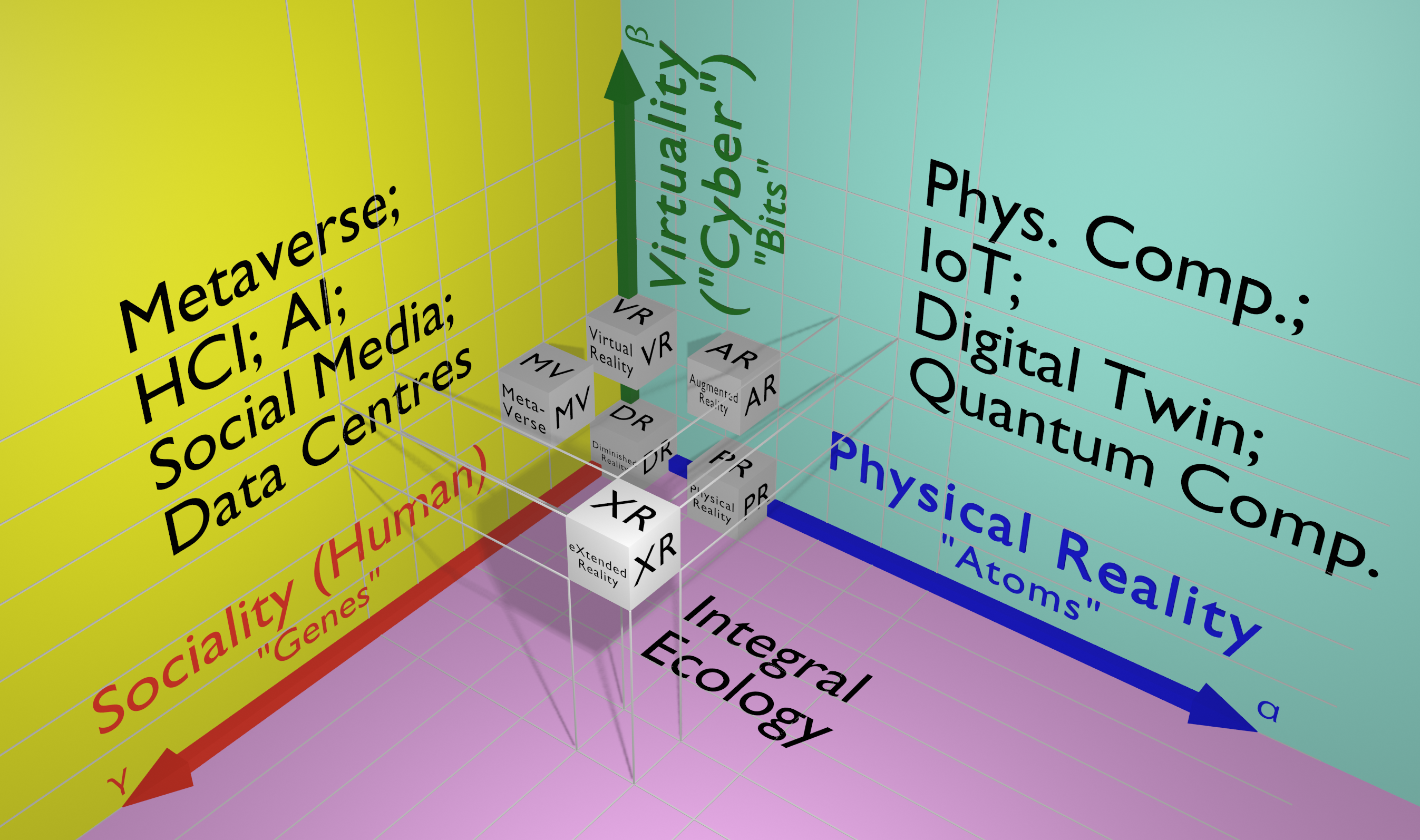
Technology that connects us to each other and
our
surroundings.
Mersivity is tech./XR that is doubly immersive, i.e. it is immersive tech that can be immersed.
Mersivity
regards technology as a vessel that immerses us yet is itself immersive in such a way as to connect us
to
each other and our surroundings.
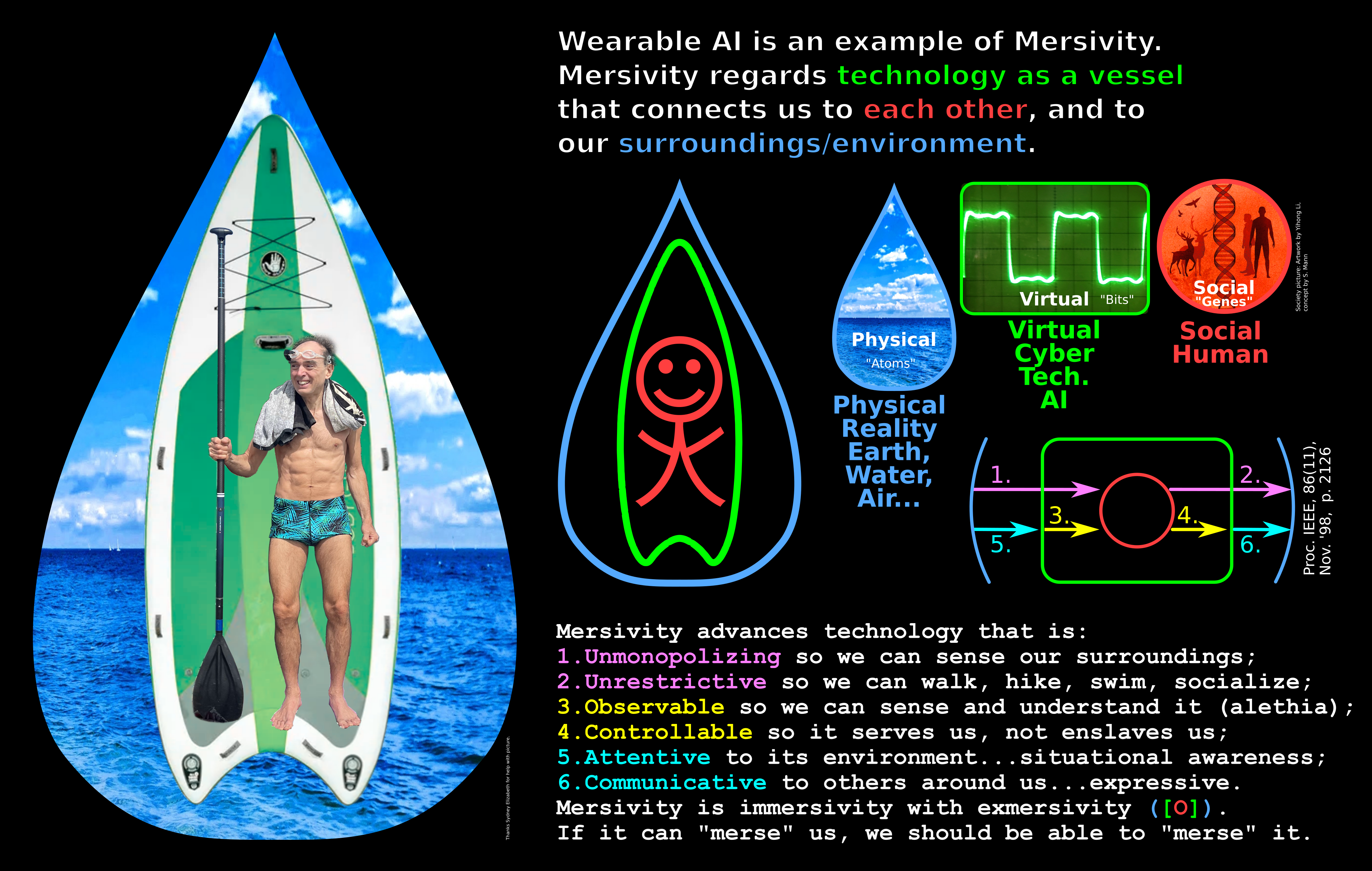
In the above diagram, the blue "drop" (water) represents our surroundings (e.g. environment, physical
reality, "Earth", "Water", "Air"...), the green vessel repsents the technology, and the red
human represents us ourselves, aboard or within the technology which itself is aboard or within our
surroundings.
Mersivity = Sustainability + Technology + Society = the Sustainable Technology Society.
Let's make technology with following six attributes:
Mersivity is our symbiosis with technology and our surrounding environment.
It embodies the above six connections.
It helps us:
1. touch
and
2. be touched by
Earth, water, air (our environment),
helping us to
3. sense
and
4. control
technology
that is itself
5. in-touch with, and
6. touches upon
the
environment.
Many technologies fail in making one or more of these six fundamental connections. The aim of the Sustainable Technology Society (Mersivity) is to ensure that technology evolves to sustain all six of these important connections.
Mersivity is technology that serves us and our environment. Mersivity is immersive / submersive / inclusive technology.
Technology that immerses you, but disconnects you from your surroundings, is harmful to both you and your surroundings (environment). This harm goes beyond pollution and other direct harm, but also harm in the sense that if we disconnect from nature, earth, water, etc., we turn our back on earth, water, etc..
Mersivity is tech that's immersive and submersive for ethical inclusivity, creating a bridge between us ("invironment") and the world around us (environment)
Mersivity is immersive and submersive, e.g. it can immerse us (like fully immersive virtual reality) and it can be immersed / submersed by us (you can dunk it in the water or go swimming or hiking with it and it won't suddenly stop working when it gets dunked in sea water).
If you can't go swimming or hike through a forest with a piece of technology, the technology could be out-of-tune with nature or distract you from nature. Technology that is not in-tune with nature encumbers us and imprisons us in a world that is divorced from nature. Wearing it or carrying it makes us hesitant to jump into the lake or venture into the wilderness with it, for fear it will be damaged (or lost or stolen if we leave it sitting on the shore or ground). And when we can't swim in the lake, we turn our back on the lake, and lose an important opportunity to be stewards of our supply of freshwater. Water is the "new oil", our most valuable resource. Thus we see Mersivity as a mandate for technology in service of both humanity and the environment (nature).
Mersivity is at the intersection of these three spheres / circles:
α Nature, physicality, reality, and the environment, e.g. Earth, Water, Air (matter) as composed of atoms... as depicted by planet Earth. Consider, for example, the landscape architecture of Michael Hough.
β Technology, virtuality, etc., as composed of "bits" (analog bits such as analog information in the Claude Shannon sense, or digital bits). Consider for example, the iMax Cinesphere as designed by Zeidler.
γ Humans, humanity, society, privacy, security, trust, governance, etc..
At IEEE our slogan is "Advancing Technology for Humanity":
Let's change that to
"Advancing Technology for Humanity and Earth (or Environment or Nature or Universe...)" or "Technology
for
us and our environment" to be inclusive of other beings, such as birds who are also "makers" in the
sense
that they build their nests from found objects and materials.
Example of mersivity at UoOP: Smart SUP with eXtended Reality (XR) / eXtended metaVerse
(XV):
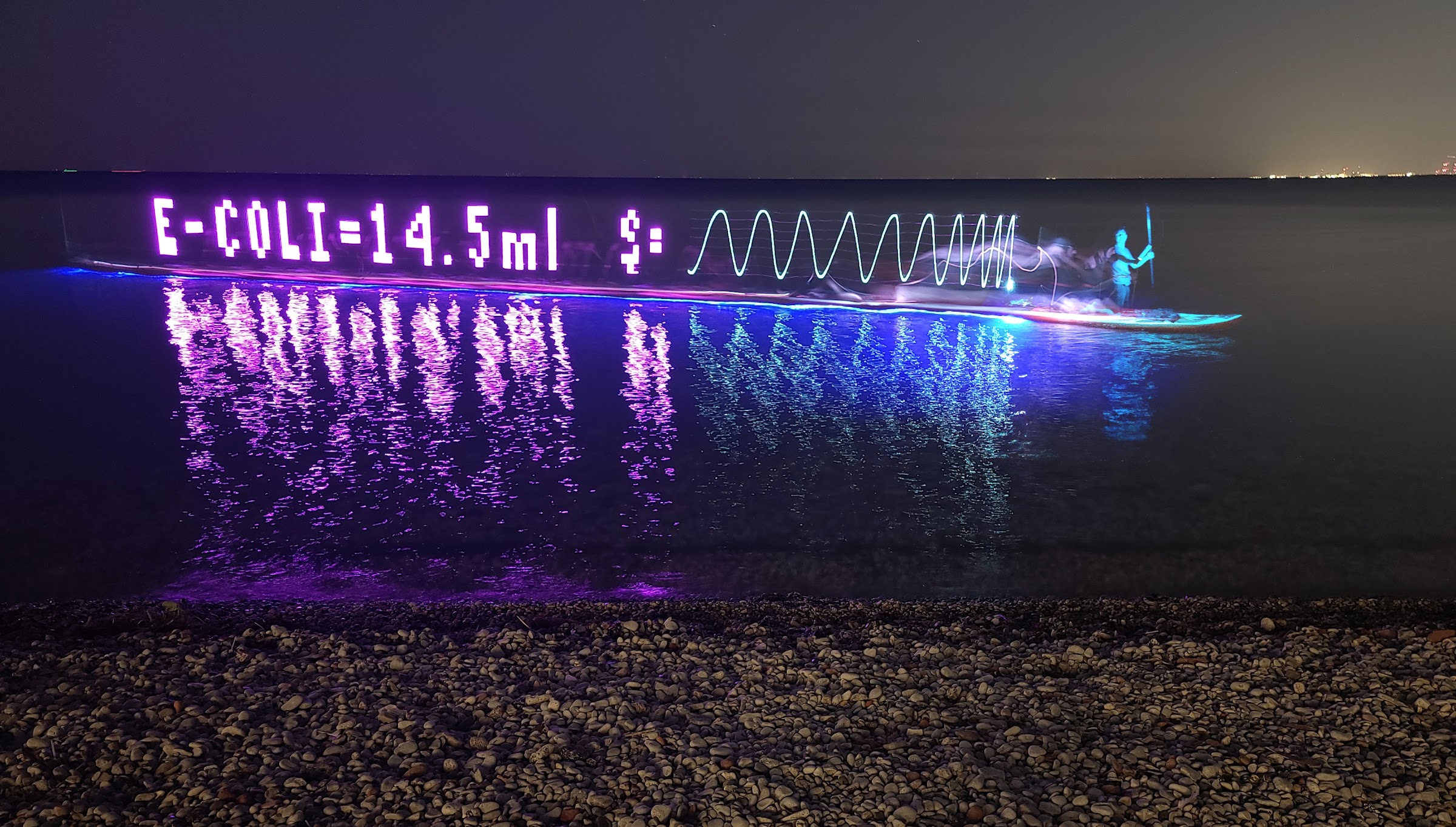
Mersivity as Vironmentalism
Technologies like vessels, vehicles, shoes, clothing, and eyeglasses, function as intermediares between us and our surroundings. The environment is that which surrounds us, and the "invironment" is us ourselves. The "vironment" is the technological border or boundary between us (the invironment) and our surroundings (the environment).Mersivity is equivalent to Humanistic Inelligence (HI)
(The same six fundamental signal flow paths; see Proc. IEEE, 86(11), Nov. 1998, p2126.)
This observation gives rise to the 3 tenets of mersivity, i.e. as a
code-of-ethics on the development of technologies for humanity and
the environment:
- Mersivity is at the intersection of (1a) Nature (e.g. water, earth), (1b) Technology; (1c) Humanity;
- It must embody reciprocal transparency, i.e. if it senses us, it must not conceal its operation.
If it oversees us (surveillance) it must admit to being "underseen"
("undersight"). There is a new word for this "undersight" that recently
appeared in Oxford English Dictionary (OED): "Sousveillance".
Compare how products used to come with parts lists and diagrams explaining their principle of
operation:
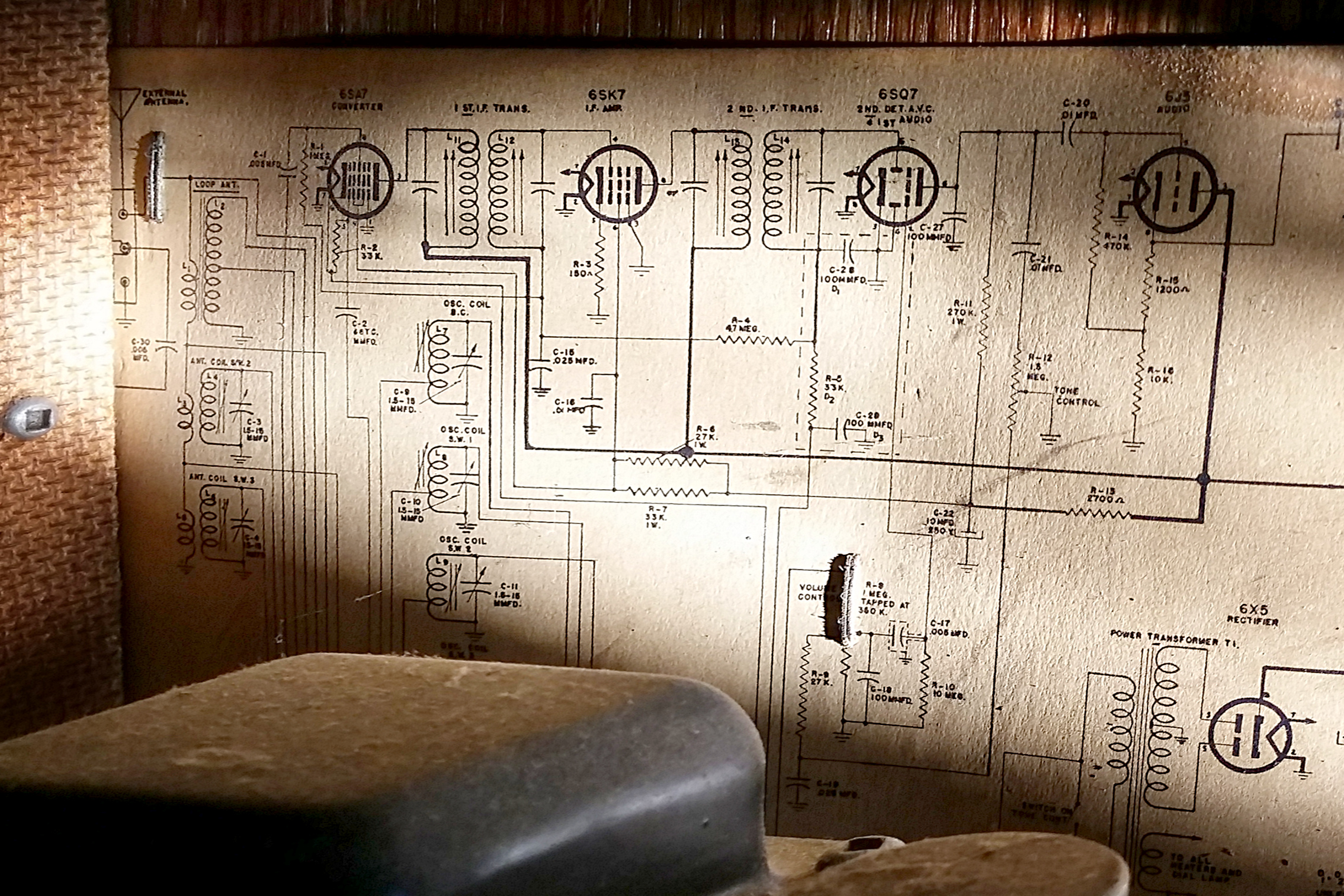
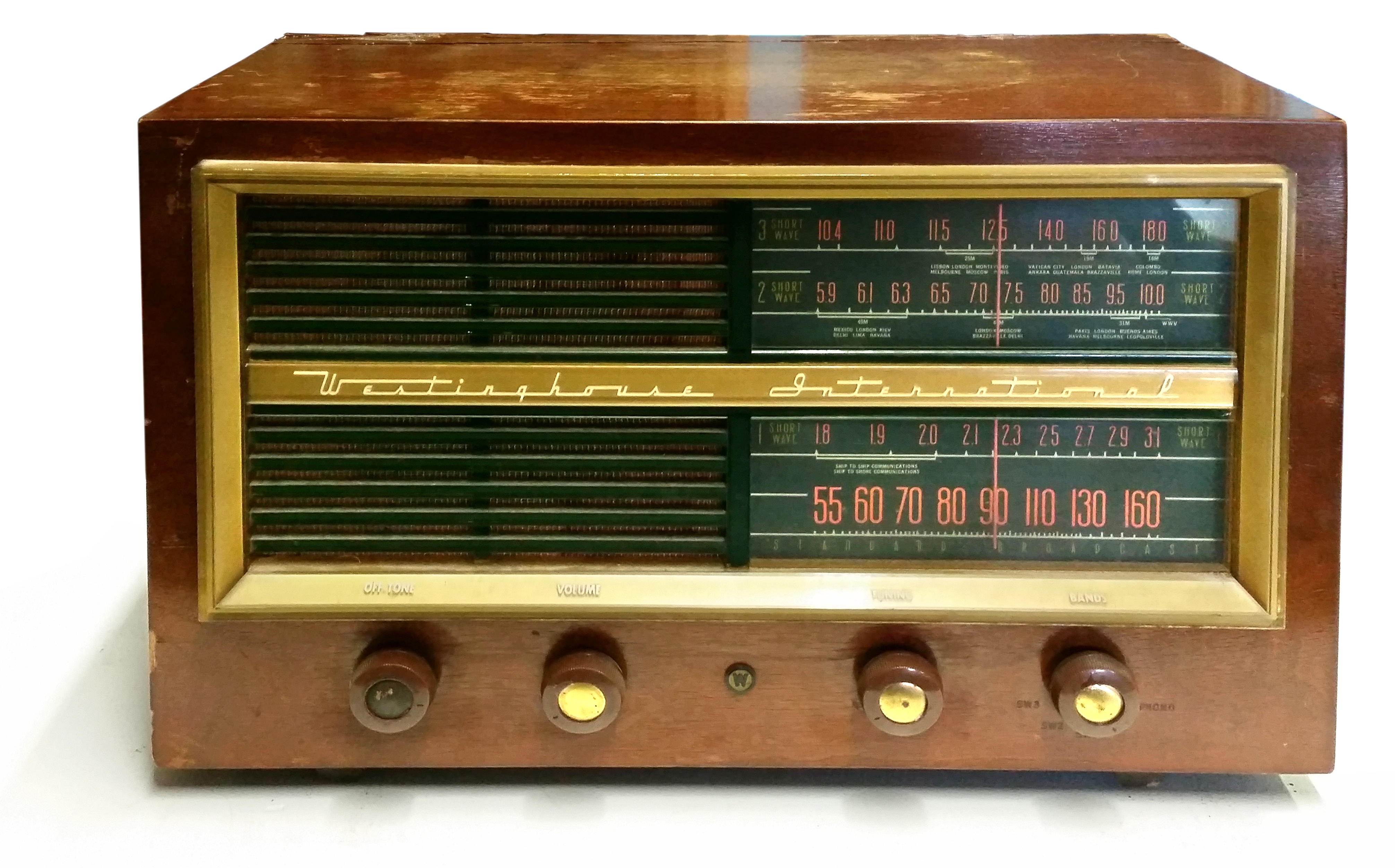
with how they now come with deliberate acts of aggression against transparency, e.g. manufacturers grinding part numbers off devices:
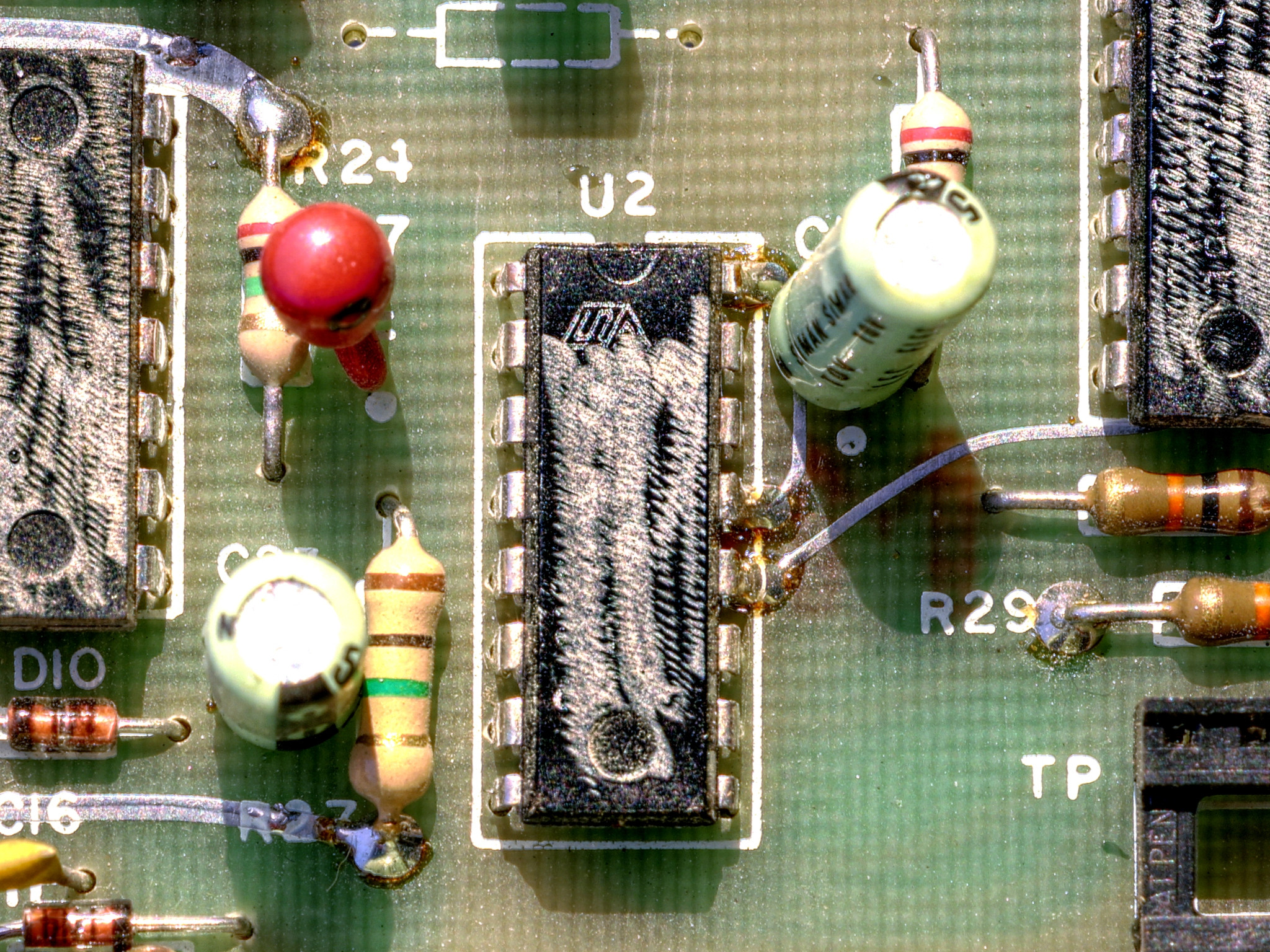 .
.
- It must embody reciprocal immersibility / submersibility, i.e. if it can "merse" (immerse / submerse) us, we must be able to "merse" it. In this way the technology must not keep from or imprison us away from earth, water, nature, the environment, and sustainability.